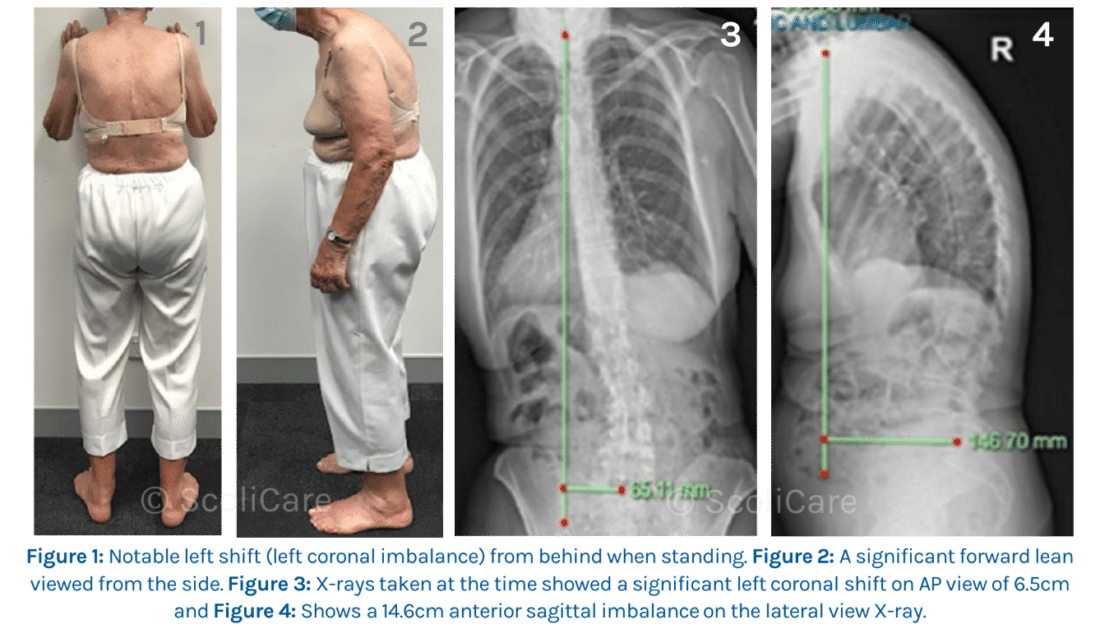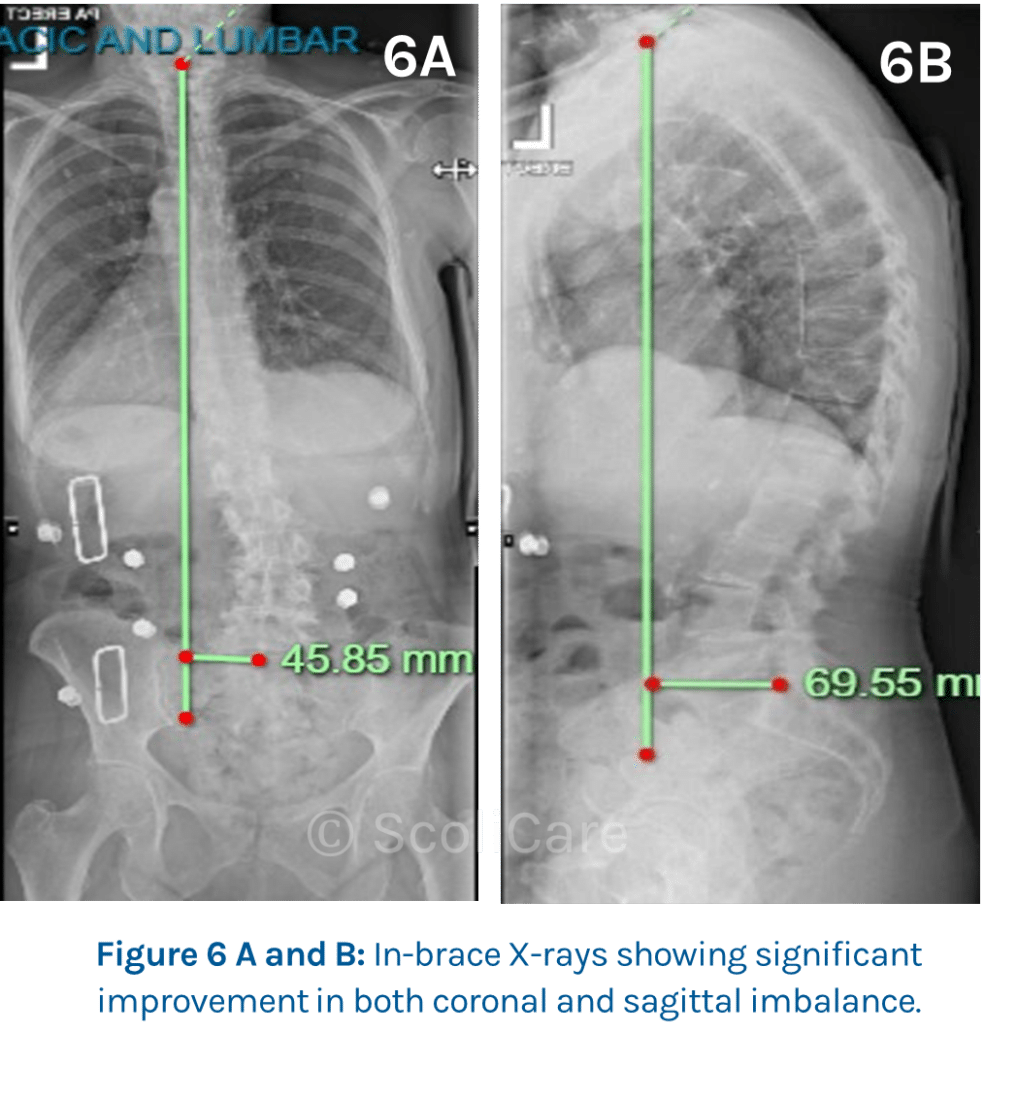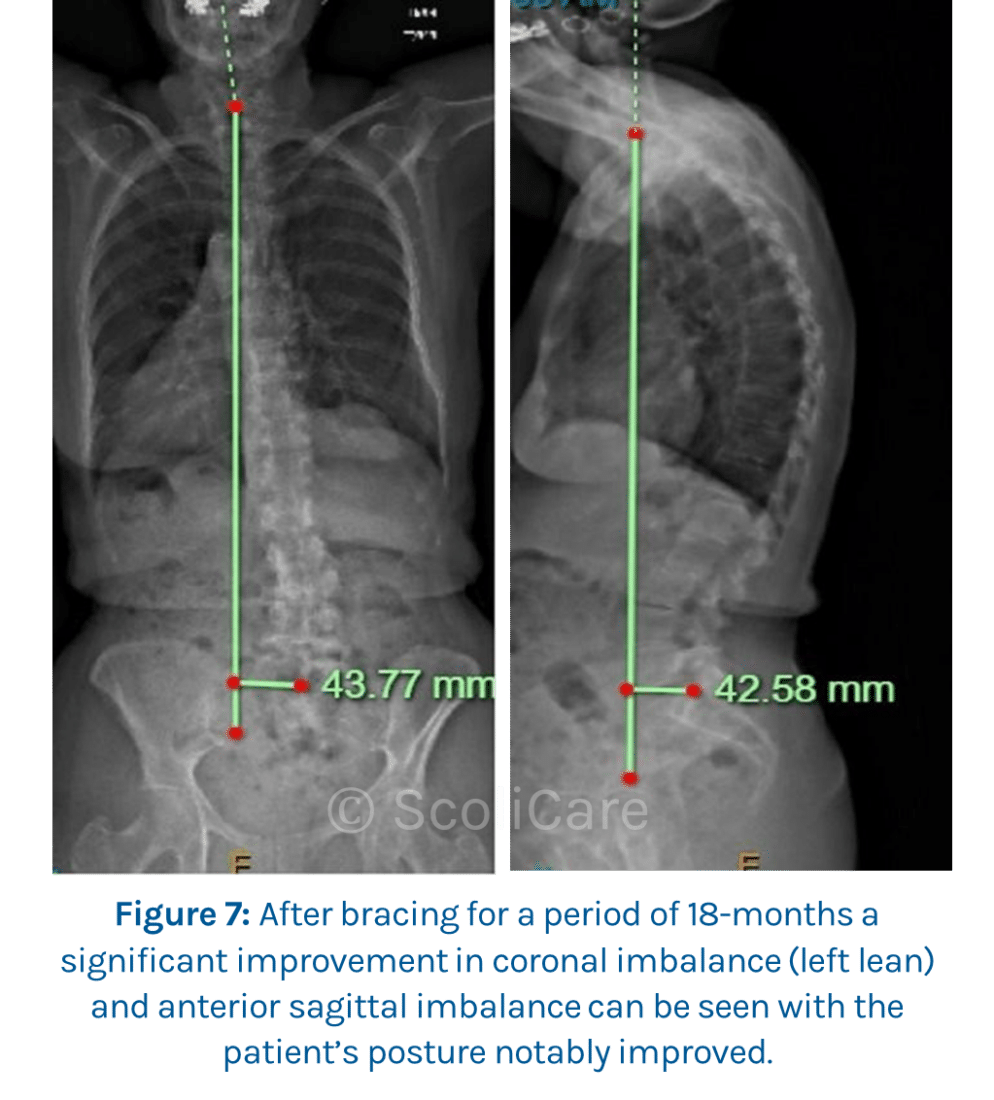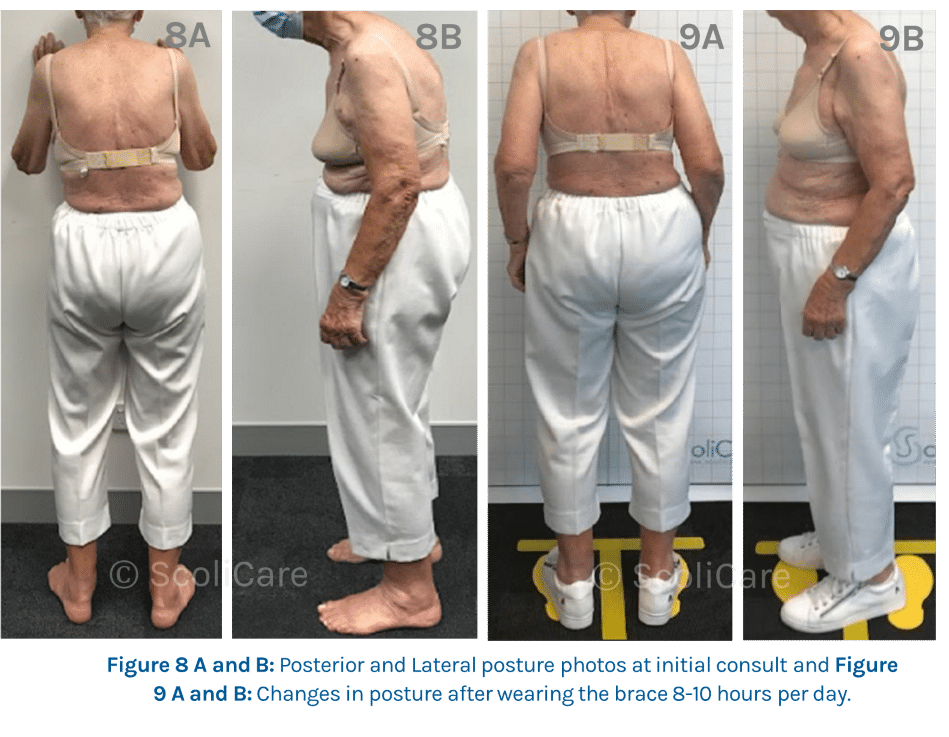Female aged 87 years with adult degenerative scoliosis.
Treatment of a severe scoliosis using a 3D designed custom scoliosis brace in an Older Female Patient
Summary:
This case details the management of an older female with Adult Degenerative Scoliosis using a 3D designed custom scoliosis brace.
The patient initially presented with low back pain and scoliosis at the age of 87 years with obvious distortions to her posture – specifically left coronal imbalance and significant anterior sagittal balance. Her posture was affecting her quality of life.
The patient was prescribed a 3D designed custom rigid thoracolumbosacral orthosis (TLSO). At 15 months of bracing treatment, both her anterior sagittal and coronal imbalance had significantly improved, along with the patient’s overall posture.
Case Background
The patient was an 87-year-old female who was struggling to walk without leaning to one side. Her condition was worsening as her posture was progressively collapsing sideways more, getting in and out of a chair was becoming an issue and she had concerns regarding balance.
There was a history of falls with some falls resulting in concussions. The patient was experiencing back pain and was concerned over losing height due to her progressively collapsing stature.
Examination Findings
The examination revealed some significant postural changes.
There was a notable shift to the left (left coronal imbalance) from behind when standing (Figure 1) and a significant forward lean viewed from the side, (Figure 2). X-rays taken at the time showed a 6.5cm left coronal shift (Figure 3) and a significant 14 cm anterior sagittal balance on the lateral view (Figure 4).
The patient’s lumbar spine showed signs of degeneration and an angle of trunk rotation of 5° on the right.

Intervention
The patient was diagnosed with an Adult Degenerative Scoliosis which was highly likely to continue to progress. Given her age of 87 years, a non-surgical treatment option of Scoliosis specific rehabilitation and bracing was recommended.
The patient was subsequently prescribed a 3D designed custom scoliosis brace , and the corrective action of the brace can be seen in the PA and lateral X-rays (Figure 6). The recommendation was that the patient wear the brace for a minimum of 6-8 hours per day or more if needed.

Outcomes
After wearing the brace for several hours, a day for a period of 18-months, a significant improvement in her coronal imbalance (left lean) by 21.34mm (32.77%), and anterior sagittal imbalance by 104.12mm (70.97%) can be seen (Figure 7). With the patient’s posture notably improved from the initial consult (Figure 8 and Figure 9) with wearing the brace for up to 8 to 10 hours per day.


Discussion
Normally, brace treatment is often used for adolescent patients with moderate (20-45°) scoliotic curves. However, in adult scoliosis, one of the key treatment factors is postural balance. Postural balance is also a predictor to the development of pain.
This patient was diagnosed with adult degenerative scoliosis, which is a scoliosis because of degenerative changes that presents later in life, rather than the adolescent idiopathic scoliosis which initially presents between the ages of 10 and 18 years of age.
Adult Scoliosis bracing outcomes are influenced by spinal stiffness, spinal imbalances in the coronal and sagittal planes and any spinal instability as a result of spondylolisthesis or lateral listhesis. Care was taken to explain to the patient initially that these factors may influence the bracing outcomes. This patient’s posture was progressively collapsing, and she struggled to maintain an upright position without using the wall for balance. She also experienced frequent back pain.
Conclusion
This case demonstrates the significant improvement of sagittal and coronal imbalance in an adult degenerative scoliosis using a 3D designed custom scoliosis brace. Treatment goals vary depending on the patients age and the unique features of their scoliosis.
© ScoliCare
NB: Results vary from case to case. Our commitment is to recommend the most appropriate treatment based on the patients type and severity of scoliosis.

